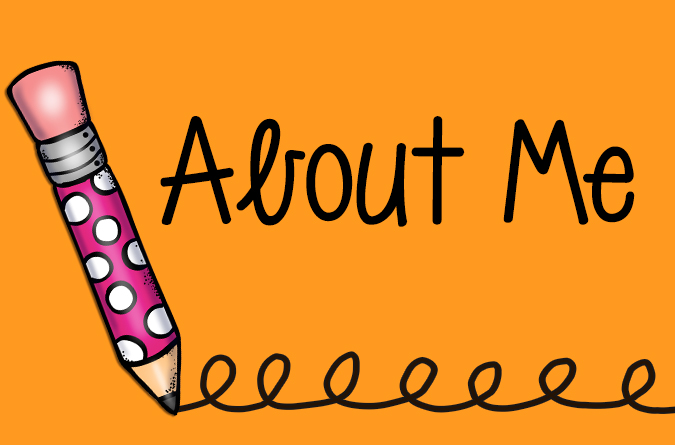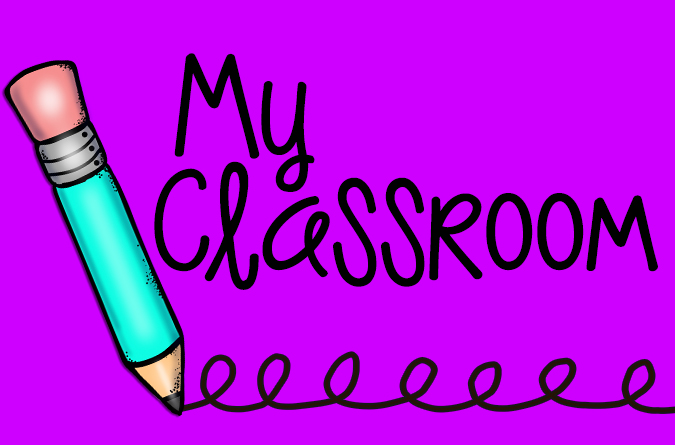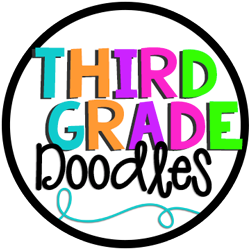The phonics debate is in full-swing. I think they are calling it "the science of reading" now, and the idea of "balanced literacy" is taking a beating. I taught first grade for 17 years using what I would call a balanced literacy approach, and yes, PHONICS was a critical element of my daily reading program. I am rather shocked at the assumption that primary teachers are not teaching phonics, because that is not what I witness in my role as an early literacy coach. I also do not believe a phonics program is the magical silver bullet that is going to fix the literacy crisis in our country. I really think the problem is much bigger than that. But I digress....
The point of this post is to help you to see that phonics instruction, although really important to the success of our early readers, is not rocket science. It involves a few important success factors that can be easily incorporated into your daily literacy routines. Let me be clear:
- YOU DO NOT NEED TO BE TRAINED IN THE ORTON GILLINGHAM METHOD.
- YOU DO NOT NEED TO PURCHASE AN EXPENSIVE PROGRAM.
- YOU DO NOT NEED TO PRINT OUT A LOT OF PHONICS WORKSHEETS!
- YOU DO NOT NEED TO SPEND AN HOUR EVERY DAY TEACHING PHONICS.
This post is based on the latest research-based practices in literacy instruction, and the brilliant work of Wiley Blevins, who has spent his entire career helping to clarify best practice in phonics instruction. I highly recommend his latest book, A Fresh Look at Phonics, which outlines critical success factors for phonics instruction, as well as common causes of phonics instruction failure.
SUCCESS FACTOR: SCOPE AND SEQUENCE
As I've mentioned, you don't need an expensive phonics program to teach foundational skills, but you do need a scope and sequence that is consistently followed in your school. There is fairly consistent agreement in the literacy world about the correct scope and sequence to follow when teaching phonics. It looks something like this:
Literacy researchers Sharon Walpole and Michael McKenna published the following proficiency targets in How to Plan Differentiated Reading Instruction (2017).
As you can see, students should master these critical phonics skills by the end of first grade so that they can begin to focus on the more rigorous work on comprehension and fluency in early second grade. Beyond first grade, phonics instruction becomes much more difficult to address due to the cognitive demands of higher text complexity. That is, students need to spend the majority of their time learning comprehension strategies and refining their reading fluency, rather than laboring over the decoding of words. They also work on comprehension and fluency in first grade through read-alouds and shared reading, but during guided and independent reading the focus is on decoding until this is mastered.
SUCCESS FACTOR: DATA-DRIVEN INSTRUCTION
Once your school has outlined a scope and sequence that everyone will follow, a common assessment needs to be given to all K-2 students to determine the specific phonics skills that they need to develop. This same common assessment needs to be used to progress monitor all students regularly throughout the school year to make sure that instruction is matching exactly what each student needs. At our school, we use the CORE Phonics Survey, but there are many very similar phonics assessments available that will tell you which skills students will need to develop.
If the assessment shows that 70% or more of your students need the same skill, then you can address these through whole-class lessons. For example, if you are a kindergarten teacher and 95% of your students do not know most of the consonant sounds yet, then its okay to teach whole-class lessons on letter sounds. Most of the time, however, you will discover that your students need differentiated instruction in small groups. For example, kindergartners who know all of their letters sounds are ready to move on to CVC blending, and will not need to sit through a whole class lesson on letter sounds. It's very important to make the most of your class time by differentiating instruction to meet the needs of individual students. Whole class lessons may not be the best avenue for phonics instruction in late kindergarten and first grade. Small group instruction will give you a bigger bang for your buck! Your best bet is to integrate phonics/word study instruction with your guided reading or strategy group lessons. For example during a 15 minute guided reading session, you could spend 5 minutes on a phonics concept. Some students may need an additional "dip" with just these skills, which can be done during your Tier 2 or 3 instruction time.
The most important thing to remember is to monitor the progress of students on a consistent basis (every 2-3 weeks if possible), so that you can make necessary adjustments to instruction to ensure that students stay on track and meet the end of year proficiency targets for phonics.
SUCCESS FACTOR: BLENDING
Kindergarten and first grade students need to be directly taught how to blend words, and need DAILY practice with blending. Teachers should follow a gradual release model when teaching blending routines (I DO, WE DO, YOU DO). Begin with FINAL BLENDING (one letter sound at at time) and then move quickly to SUCCESSIVE BLENDING (melting words together quickly). Once students know how blending works, successive blending should be the main mode of practice.
Elkonin sound boxes are a well-known way to help students learn to blend short words. You would first use them to develop phonemic awareness by pushing a coin into the boxes for each sound. Later you would have students place (or write) the corresponding letter into each sound box.
Wiley Blevins describes a very simple approach to daily blending with students called BLENDING LINES. Simply write out five or six lines of words on a chart that align with the skill students are working on and students can read them chorally and independently. Do this daily as a whole class or in small groups. Use the gradual release model (I do, we do, you do) and provide corrective feedback (modeling the correct way) when students make errors. When creating these blending lines and activities, use high-utility words that students are likely to encounter in text.
SUBSCRIBE {on the right} to receive FREE Print and Go Blending Lines for CVC Words!
SUCCESS FACTOR: DICTATION AND WRITING
Dictation is such a simple way to practice phonics skills. It will only take about five minutes, 2-3 times per week to really see a difference in students' application in their writing. Give students a personal dry erase board and call out words that follow the phonics skill you are teaching. It is a great time to model blending as you say the words aloud and then students write them on their boards. Be sure to check each student's spelling and provide corrective feedback as needed.
I am a huge advocate of providing students with lots and lots of opportunities to write each day....even kindergartners! It is the best way for them to apply and practice their knowledge of phonics skills (not to mention the MANY other benefits of daily writing practice).
SUCCESS FACTOR: WORD BUILDING/WORD SORTS
Word building and words sorts help students to understand the patterns in words. Their knowledge of one spelling pattern can help them to read dozens of other words. Word building can also help students to discern beginning, middle and ending sounds as they manipulate each to make new words (e.g., change one letter in cat to make can; change one letter in cat to make cut, etc). Word sorts can also help students to learn spelling patterns and exceptions to spelling rules. They can be especially helpful for students learning to differentiate between sounds (e.g., picture sorts used to differentiate beginning consonant sounds or different vowel patterns). Making and breaking words and word sorting should be a daily practice in every kindergarten and first grade classroom.
SUCCESS FACTOR: HIGH FREQUENCY WORDS
There are about 100 high frequency words that account for about 50% of the words found in print. Early readers need to learn these words before second grade in order to read grade-level text. Some of these words have irregular phonics patterns, but many do not and can be first learned by decoding just like other words (for example, the word "and" can be sounded-out easily). For the most part, these words should be taught the same way that other words are taught, through sound/symbol analysis. I highly recommend that you read and save the article Teach Sight Words As You Would Other Words by Nell Duke. Ditch the rings of sight words and simply provide students with a few minutes each day to practice the words by spelling and writing the words. You can jazz it up by having them chant, sing, clap, jump (etc.) the words (a-n-d....and!; t-h-e.....the!). You will be amazed at how quickly they internalize the spellings with daily clap and chant practice, which can be done with the whole class...five minutes is all it takes! HERE are some really fun ways to practice high-frequency words with your whole class or in your small groups.SUCCESS FACTOR: DECODABLE TEXT
Phonics should not be taught ONLY in isolation. Students will need regular opportunities to practice the phonics skills they have been taught IN CONTEXT. Decodable books (also called connected text) are books that have a large percentage of decodable words, ideally words that align with the particular phonics skills that students have learned (i.e., if students are working on blending CVC words, then they should have access to decodable text that has plenty of CVC words). I am a fan of BOB books because they follow the common scope and sequence mentioned above and are CHEAP! But you can also find decodable books on Reading A-Z (you need a subscription). Keep in mind that decodable text should NOT make up the majority of your students' reading diet. They are not complex reading and do not provide lots of opportunities for comprehension conversations, but they do provide students with necessary decoding practice on the specific skills they are learning. I commonly find that teachers forget about the importance of using decodable text. They are not exciting or particularly fun to read, but they are a necessary part of effective phonics instruction.CONCLUSION
I predict that the phonics debate will continue long after I've retired. My hope is that teachers can see through all of the drama and confusion and realize that PHONICS INSTRUCTION IS NOT ROCKET SCIENCE. It's really pretty simple. I hope that this post has helped you to see the forest through the trees, and you walk away with some clarity on how to address phonics instruction with your young readers.Thanks for stopping by! Before you go don't forget to...
SUBSCRIBE {on the right} to receive FREE Print and Go Blending Lines for CVC Words!
Some products that you might find useful:
































No comments
Note: Only a member of this blog may post a comment.